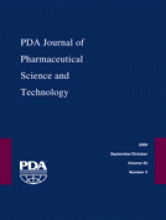Abstract
The blood–brain barrier restricts the brain uptake of many important hydrophilic drugs and limits their efficacy in the treatment of brain diseases because of the presence of tight junctions, high metabolic capacity, low pinocytic vesicular traffic, and efficient efflux mechanisms. In the present project, amino acid-coupled liposomes bearing dopamine HCl were prepared to deliver the drug to the brain utilizing receptor-mediated transcytosis. Uncoupled liposomes were prepared by cast film method using phosphatidylcholine and cholesterol, whereas coupled liposomes were prepared using phosphatidylcholine, cholesterol, and glutamate stearylamine conjugate in the film. These liposomes were characterized for entrapment efficiency, vesicle size, shape, in vitro drug release, and in vivo studies. The in vitro drug release was analysed by using dialysis membrane. The vesicle size was found to increase upon coupling of liposomes, whereas percent entrapment efficiency was reduced from 38.89 ± 1.94% to 34.15 ± 1.70% after coupling of liposomes. The in vitro percent cumulative drug release studies exhibited 51.6% drug release for uncoupled liposome and 37.9% for coupled liposome at the end of 24 h. These selected formulations were subjected for in vivo performance, which was assessed by periodic measurement of drug (chlorpromazine)-induced catatonia in albino rats (Wistar strain) and fluorescence microscopy studies of the rat brain. The results were compared with plain dopamine HCl solution. Studies revealed that dopamine HCl can be effectively delivered to brain via glutamate-coupled liposomes, and results clearly indicated the superiority of the coupled liposomal formulation over the uncoupled formulation.
- © PDA, Inc. 2009
PDA members receive access to all articles published in the current year and previous volume year. Institutional subscribers received access to all content. Log in below to receive access to this article if you are either of these.
If you are neither or you are a PDA member trying to access an article outside of your membership license, then you must purchase access to this article (below). If you do not have a username or password for JPST, you will be required to create an account prior to purchasing.
Full issue PDFs are for PDA members only.
Note to pda.org users
The PDA and PDA bookstore websites (www.pda.org and www.pda.org/bookstore) are separate websites from the PDA JPST website. When you first join PDA, your initial UserID and Password are sent to HighWirePress to create your PDA JPST account. Subsequent UserrID and Password changes required at the PDA websites will not pass on to PDA JPST and vice versa. If you forget your PDA JPST UserID and/or Password, you can request help to retrieve UserID and reset Password below.






